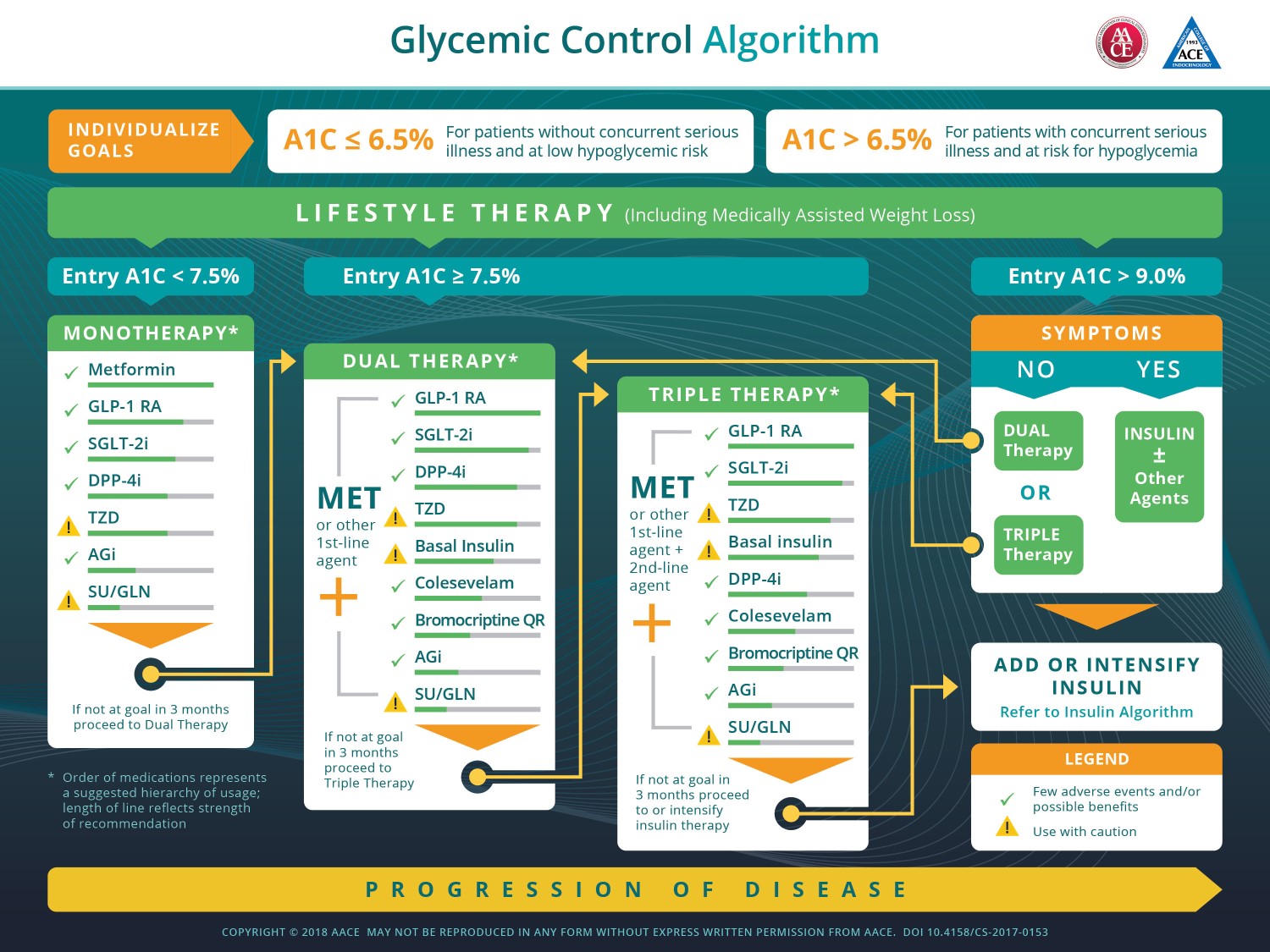Diabetes Management Guidelines
Pharmacologic Approaches to
Glycemic Treatment:
The goals in caring for patients with diabetes mellitus are to eliminate symptoms and to prevent, or at least slow, the development of complications.

FIND BELOW TREATMENT RECOMMENDATIONS FOR TYPE 2 DIABETES:
Doctors Liked to Read More
- Metformin is
the preferred initial pharmacologic agent for the treatment of type 2
diabetes. Once initiated, metformin
should be continued as long as it is tolerated and not contraindicated.
- If the A1C target is not achieved
after approximately 3 months, metformin can be combined with any one of
the preferred six treatment options: Sulfonylurea (Gliclazide, Glimepiride), Thiazolidinedione (Pioglitazone), DPP-4 inhibitor (Sitagliptin,
Vildagliptin, Saxagliptin, Linagliptin), SGLT2 inhibitor (Dapagliflozin, Canagliflozin,
Empagliflozin), GLP-1 RA (Liraglutide, Trelagliptin)
OR
Basal
insulin (Glargine, Detemir, Degludec) ; the
choice of which agent to add is based on drug-specific effects and patient
factors.
Note: Consider
initiating dual therapy in patients with newly diagnosed type 2 diabetes who
have A1C ≥1.5% (12.5 mmol/mol) above their glycemic target.
- The early introduction of insulin
should be considered if there is evidence of ongoing catabolism
(weight loss), if symptoms of hyperglycemia are present, or when A1C
levels (>10% [86 mmol/mol]) or blood glucose levels (≥300 mg/dL [16.7
mmol/L]) are very high.
- Control of fasting glucose can be
achieved with human NPH insulin
(Insulin Human N) or a Long-acting insulin analog (Glargine, Detemir, Degludec). Many
individuals with type 2 diabetes require doses of insulin (Prandial insulin like Insulin Human R, Aspart, Lispro,
Glulisine) before meals, in addition to basal insulin, to reach
glycemic targets.
- Among patients with type 2
diabetes who have established atherosclerotic cardiovascular disease,
established kidney disease, or heart failure, a sodium–glucose co-transporter
2 inhibitor or glucagon-like peptide 1 receptor
agonist with demonstrated cardiovascular disease are preferred.
Lifestyle
modifications that improve health should be emphasized along with any
pharmacologic therapy.
The
American Diabetes Association/European Association recommend a patient-centered
approach to choosing appropriate pharmacologic treatment of blood glucose.
- This
includes consideration of efficacy and key patient factors:
1)
important comorbidities such as atherosclerotic cardiovascular disease (ASCVD)
and indicators of high ASCVD risk, chronic kidney disease (CKD), and heart
failure.
2)
hypoglycemia risk,
3) effects
on body weight,
4) side
effects,
5) cost,
and
6) patient
preferences.
- Intensification of treatment for
patients with type 2 diabetes not meeting treatment goals should not be
delayed.
- The medication regimen should be
reevaluated at regular intervals (every 3–6 months) and adjusted as needed
to incorporate new patient factors.
American Diabetes
Association. Pharmacologic approaches to glycemic treatment: Standards of
Medical Care in Diabetes—2021.
Diabetes Care 2021; 44(Suppl. 1): S98–S111
https://care.diabetesjournals.org/content/44/Supplement_1/
https://www.diabetes.org/a1c/diagnosis
Note: For
informational purposes only. Consult your textbook for advising your patients.




Comments
You must login to write comment